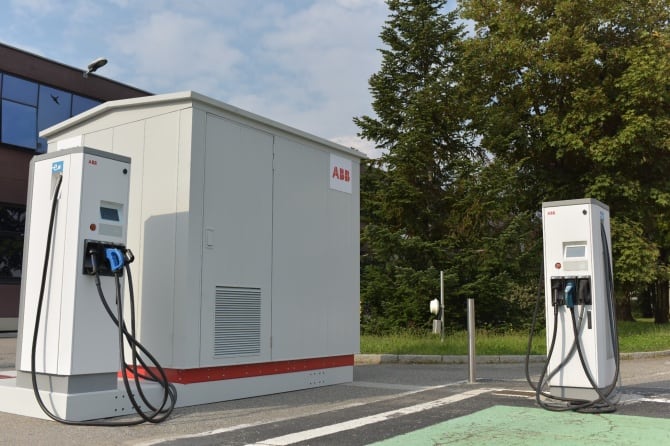ABB explains why developments in EV charging can add value to food businesses.

According to data from electric car market watchdog EV Volumes, the number of electric vehicles on the road hit three million globally in November 2017. This marked a 50 per cent increase on the previous year, with a further two million expected to hit the streets by the end of 2018
We expect that this will be an ongoing trend, with many consumers becoming increasingly conscious of their carbon footprints. This us further compounded by the fact that many countries are introducing pro-EV legislation, such as that proposed by the UK Government stipulating all vehicles on the road must have a 50-mile electric range by 2040.
This provides an interesting opportunity for commercial food retailers and restaurants to add additional value to their customers’ experience and attract new visitors. In fact, following a 2015 survey conducted by online EV charging map Zap Map, the company’s director, Dr Ben Lane, concluded that “the survey reveals the important role that EV charging infrastructure can play in attracting customers to retail and leisure destinations. As the number of EV users grows, so will the demand for EV charging facilities at car parking sites”.
However, there has typically been an issue of the time required to recharge an EV. Many charging stations provide a charge of no more than 120kW, which can often only be applied to one vehicle at a time. This means that charge times are longer for consumers and the cost of installation is higher for food and drink businesses investing in them. To maximize the return of investment, EV charging stations need to provide a more efficient charging rate.
To deliver this, ABB recently launched the Terra High Power (HP) electric vehicle charger. The Terra HP is the world’s fastest EV charger, operating at up to 350kW — almost three times faster than the typical EV charger — and able to add up to 200km (120 miles) of range to an electric vehicle after just eight minutes of charge time. It also includes dynamic DC power sharing technology, which allows a two-power cabinet charging system to charge a couple of EVs simultaneously with up to 350 kW.
While supermarkets can use charging points with a slower rate of charge as customers may be in store for longer periods, installing faster charging points means customers get better value from their visit and are therefore more incentivized to choose that particular location.
But this efficient speed of charge presents a particularly interesting opportunity for restaurants, as the rapid charge makes the installation of an EV charging station a viable option for establishments where customers make shorter stays. This means that even fast food outlets could invest in EV charging to attract more customers and stand out from competitors.
Interestingly, it’s been exactly 100 years since the first talk of autonomous vehicles and, today, it seems that many of these self-driving cars will be electric. And just as businesses at the time were preparing for an automotive future, today’s commercial food businesses should begin preparations for catering to the future of customer transport; and engineering can help them make the most of the opportunity, tailored to theoir customers' demands.
Robert Glass is global food and beverage communications manager for ABB










Water Sector Talent Exodus Could Cripple The Sector
Maybe if things are essential for the running of a country and we want to pay a fair price we should be running these utilities on a not for profit...